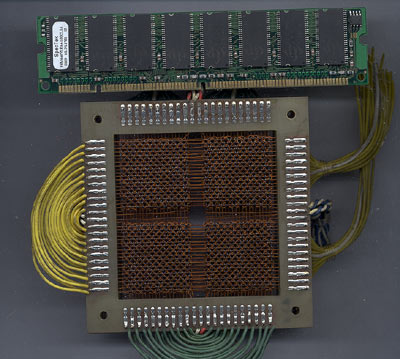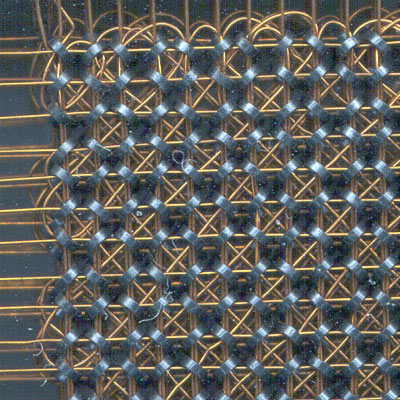For recycle, we received some “Medical computer” and inside I found this nice thing. The DIMM nearby is to compare the sizes.

A small ring, or core, of ferrite (a ferromagnetic ceramic) can be magnetized in either of two opposite directions (clockwise or counterclockwise). Therefore such a core can be used for storing a bit of information. For almost 15 years, ‘core’ has been the most important memory device. The invention of core memory in 1949 was a leap forward in cost-effectiveness and reliability. This device is dated in 1966. This memory “module” is made in Japan. I think by TDK. It consist of 5 PCBs with 4 “mats”. Total 8000 bits of RAM. It is whole 1000 Bytes (0.9765625 kBytes)! Cool.
Core memory has been in use until recently for special purposes, because it retains the information when the power is switched off, and it is resistant against radiation.

The physical basis of core memory is the fact that a current sent along a wire passing through a ferrite core sets a persisting core magnetization, if the current exceeds a certain threshold. A current in the opposite direction will reverse the direction of the magnetization. In this event a voltage pulse will be induced in another wire threaded through the core, the ‘sense wire’; the polarity of this pulse is determined by the original magnetization direction. Clearly reading is a destructive operation, and as part of the read cycle the original state of each core must be restored.
Core memories were often organized as a planar matrix, the ‘write’ wire being split up into two wires (row, column) each carrying half of the threshold switching current. This made it possible to address a specific core in the matrix for reading or writing.
(Smart text is copied from internet.)
BTW, this device originated such known term as CORE DUMP. 🙂

Pingback: Los orígenes del almacenamiento de la información (IV): las memorias de ferritas – Un poco de ciencia, por favor